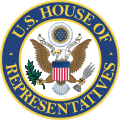Jim Slattery | |
|---|---|
 | |
| Member of the U.S.HouseofRepresentatives from Kansas's 2nd district | |
| In office January 3, 1983 –January 3, 1995 | |
| Preceded by | Jim Jeffries |
| Succeeded by | Sam Brownback |
| Member of the KansasHouseofRepresentatives from the 53rd district | |
| In office January 8,1973 –January 8,1979 | |
| Preceded by | Glee Jones |
| Succeeded by | Vic Miller |
| Personal details | |
| Born | James Charles Slattery August 4,1948 Good Intent,Kansas,U.S. |
| Party | Democratic |
| Spouse | Linda Slattery |
| Education | Washburn University (BS,JD) |
| Military service | |
| Allegiance | |
| Branch/service | United States Army |
| Years of service | 1970–1975 |
| Rank | Second Lieutenant |
| Unit | 69th Infantry Brigade Kansas Army National Guard |
| Battles/wars | Vietnam War |
James Charles Slattery (born August 4,1948) is an American politician. He served in the U.S. House of Representatives from 1983 to 1995 representing Kansas's 2nd congressional district as a Democrat,was the Democratic nominee for governor in 1994 and was the Democratic nominee for U.S. Senator in 2008.


